- Home
- James Joyce
Stephen Hero Page 2
Stephen Hero Read online
Page 2
In the development of Stephen Daedalus, as presented in both the earlier and later versions, there are five main themes, all closely related to the central theme of Stephen himself. The themes are these: Stephen’s family; his friends, male and female; the life of Dublin; Catholicism; Art. Stephen’s development as an individual may be described as a process which sloughs off the first four in order that the fifth may stand clear. When this happens, and art is defined, the artist may then return to the first four for his subject matter. In fact he has to return to them if his function as an artist is to be fulfilled.
But before he can do this he has to determine what sort of man the artist is and also what art is: the two, for autobiographical purposes, are in many respects the same. It is not only Stephen Hero who matters — Joyce mentions “that old English ballad Turpin Hero, which begins in the first person and ends in the third person” [Portrait, p. 252]; — it is the portrait of the artist as well. Stephen as hero is an adolescent; Stephen as artist is an adult. That is, perhaps, the major difference between the two versions of his career.
Yet the aesthetic theory with which we are familiar in the Portrait is already fully outlined in Stephen Hero, and no doubt one of the chief interests of the present text for most readers will consist in discovering how differently it is presented here from the way it is presented in the Portrait. In the Portrait Stephen outlines his aesthetic program in a conversation with Lynch, and the intellectual integrity and hardness of Stephen’s ideas are contrasted with the coarse ejaculations and comments of his companion. This is an effective way of sustaining interest in an abstract exposition, and by setting Stephen’s seriousness against Lynch’s humor, what might be heavy or monotonous becomes lively and entertaining. The theory is presented objectively and with a comic background. But in the Portrait Stephen merely expounds his views; we are made to feel that he is so convinced of their truth that it doesn’t in the least matter to him whether anybody else agrees with him or not. Cold fish that he is, he is above approval or disapproval; he is already prepared for “silence, exile and cunning.”
Not so the younger Stephen of the present text. To him the setting forth of his ideas is a matter of great personal importance, and he delivers them, not in the casual form of a conversation with a friend, but in the form of a public paper to a literary society; it is a public event, an event for which Stephen prepares with great care. Furthermore his ideas are not contrasted merely with one other man’s semi-humorous comments: they are contrasted with the conventionality of Catholicism, and the passage [pp. 90 ff.] which describes Stephen’s conversation on the subject with the President of the University is one of the best in the book. Stephen’s ideas are also contrasted, in the present text, with the intellectual paralysis of Dublin. For when he delivers his paper, which, word for word, he had so carefully planned, it gets only an indifferent and misunderstanding response; the philistines cannot be conquered on their own ground, and Stephen falls back more than ever on his own resources.*
The advantages of presenting the theory in such a fashion are obvious. We follow Stephen as he develops it through his conversations with his brother Maurice, the situation comes to a crisis in the delivery of the paper, and we are interested, as we are interested in a drama, as we wait to hear how the audience will react. We share Stephen’s disappointment and disillusionment. Yet the method has its disadvantages as well: the development of Stephen’s theory is spread out over a long period, it is intercepted by other episodes (the five main themes are interwoven throughout), and its exposition does not occupy, as in the Portrait, a crucial place in Stephen’s career. In the Portrait the statement of Stephen’s theory is an immediate prologue to his abandonment of Ireland, and hence is a climax to the whole book; in the present version, however dramatically it may be described, it is only one episode among many.
In fact the way the theory is finally presented in the Portrait is an illustration of the theory itself. One of Stephen’s central ideas is that only improper art is “kinetic”; it moves us to do something, which true art should not do; on the contrary, the true “esthetic emotion” is static, and the true artist is essentially impersonal: “The artist, like the God of the creation, remains within or behind or beyond or above his handiwork, invisible, refined out of existence, indifferent, paring his fingernails” [Portrait, p. 252]. It is in this impersonal, static, non-kinetic fashion that Stephen expounds his theory to Lynch. But in the present text it is expounded kinetically. Stephen is personally interested in the success of his paper, his intellectual fortunes seem to depend on it, and we are moved, not necessarily to do something, but to sympathy and concern for the outcome. The later text is, as usual, more mature, and shows Joyce, as the earlier version does not, illustrating his theory by his practice.*
-III-
There is one aspect of Stephen’s aesthetic theory which appears in the manuscript alone, and is left out of the Portrait entirely. In my opinion the passage describing it is the most interesting and revealing in the entire text. It is the passage on pp. 210 ff. beginning with the words, “He was passing through Eccles Street,” which explains Joyce’s theory of epiphanies.†
I ask the reader to turn to this passage, and read it.
This theory seems to me central to an understanding of Joyce as an artist, and we might describe his successive works as illustrations, intensifications and enlargements of it. Dubliners, we may say, is a series of epiphanies describing apparently trivial but actually crucial and revealing moments in the lives of different characters. The Portrait may be seen as a kind of epiphany — a showing forth — of Joyce himself as a young man; Ulysses, by taking one day in the life of the average man, describes that man, according to Joyce’s intention, more fully than any human being had ever been described before; it is the epiphany of Leopold Bloom, just as, years earlier, the trivial conversation overheard on a misty evening in Eccles Street (where, incidentally, Mr. Bloom lived) was the epiphany of those two people’s lives, shown forth in a moment. And Finnegans Wake may be seen as a vast enlargement, of course unconceived by Joyce as a young man, of the same view. Here it is not any one individual that is “epiphanized”; it is all of human history, symbolized in certain types the representatives of which combine with one another as the words describing them combine various meanings, so that H. C. Earwicker and his family, his acquaintances, the city of Dublin where he lives, his morality and religion, become symbols of an epiphanic view of human life as a whole, and the final end of the artist is achieved.
And if we keep this theory in mind, as a further aspect of the static theory of art developed throughout the present text, it helps us to understand what kind of writer Joyce is. A theory like this is not of much use to a dramatist, as Joyce seems to have realized when he first conceived it. It is a theory which implies a lyrical rather than a dramatic view of life. It emphasizes the radiance, the effulgence, of the thing itself revealed in a special moment, an unmoving moment, of time. The moment, as in the macrocosmic lyric of Finnegans Wake, may involve all other moments, but it still remains essentially static, and though it may have all time for its subject matter it is essentially timeless.
-IV-
But this fragment of Stephen Hero does not have to be considered in relation to Joyce’s later writing to be thought worth preserving. It can stand on its own merits as a remarkable piece of work. Though it is not as carefully planned and concentrated as the Portrait, it has a freshness and directness, an accuracy of observation and an economy and sharpness of style that make it, in spite of its occasional immaturities, something to be enjoyed and admired for its own sake. It is one of the best descriptions of a growing mind that has ever been written.
Theodore Spencer
EDITORIAL NOTE
There are two kinds of correction in the manuscript as Joyce left it. One kind consists of revisions made in copying it from the rough draft: certain words are deleted, others have been changed. These corrections have been indicated in the te
xt by placing the original version in brackets with the amended version following. There are also some obvious errors — repetitions of words, omitted words and faults of punctuation. These are of no interest and I have silently set them right.
The second kind of correction has been more difficult to handle. Joyce evidently went through the manuscript with a red or blue crayon in his hand and slashed strokes beside, under or across certain phrases, sentences and paragraphs. Presumably he did not like them and intended to change them or get rid of them. Some indication of where these slashes occur is obviously necessary if an accurate presentation is to be given of the manuscript and of Joyce’s feelings about it. Consequently I have indicated these slashed passages by enclosing them between the marks « ». The slashes are made very broadly, as if in haste or impatience, so that it is not always easy to decide where, in Joyce’s mind, the unsatisfactoriness began and stopped. But the general indications are clear enough, and the slashes were evidently made by Joyce himself since he used the same crayon to make an occasional verbal correction, and the handwriting in such cases is his.
I am greatly indebted to Mr. John Kelleher, of the Society of Fellows, Harvard University, for putting his knowledge of all things Irish at my disposal. The reader who cares to identify the characters mentioned in the present text with their prototypes in real life should consult Mr. Gorman’s James Joyce [pp. 53 ff.]. Mr. Gorman and Messrs. Farrar and Rinehart, publishers of Mr. Gorman’s book, have kindly permitted the use of the photograph of the young Joyce and his friends. The Augustus John portrait drawing of Joyce is in the collection of Mrs. Murray Crane, and the program announcing Joyce’s essay in the collection of John Jermain Slocum.
* Herbert Gorman: James Joyce, Farrar & Rinehart, New York, 1940, p. 196.
* Mr. Gorman agrees with me on this point. I quote a letter from him dated January 21, 1941: “I … believe that what you have is all that Miss Beach possessed. Neither do I believe that any other portion of the draft exists. When Mr. Joyce’s secretary (I presume you mean M. Paul Léon) wrote you that ‘lots’ had been sold to ‘different institutions in America’ I think his informant (presumably Mr. Joyce) had mixed up in his mind other material that Miss Beach was selling.”
* Mr. Harry Levin has already used the manuscript to excellent critical effect in his James Joyce, a Critical Introduction, New Directions, 1941.
* In the present text, Stephen meets Emma at the house of a Mr. Daniel, where he sometimes goes on Sunday evenings. Nothing is said about Mr. Daniel and his household in the Portrait, but Joyce transfers, in a shortened form, his description of Mr. Daniel’s living room to describe “her” house [Portrait, p. 257]. The change is a typical example of Joyce’s economy and concentration in the published work.
* In the manuscript Stephen does, to be sure, discuss his aesthetic theory with a friend [see pp. 212 ff.]. But it is interesting to note that the friend is Cranly, not Lynch, that the conversation comes long after the main theory is expounded in the public essay, and that Stephen is personally disappointed in Cranly’s failure to be interested in the argument.
* There are traces of Stephen’s paper on aesthetics left in the Portrait. On page 217 the dean of studies asks Stephen: “When may we expect to have something from you on the esthetic question?” And on p. 247 Donovan says to Stephen: “I hear you are writing some essay about esthetics." These remarks, like several others in the Portrait (for example the references to “that certain young lady” [Emma] and Father Moran, p. 236) take on richer connotations — and sometimes can only be fully understood — if we read them with a knowledge of the present text in mind.
† This theory is mentioned once in Ulysses [Random House edition, p. 41]. Stephen is meditating: “Remember your epiphanies on green oval leaves, deeply deep, copies to be sent if you died to all the great libraries of the world, including Alexandria?” Dr. Gogarty also refers to it in his autobiography, As I was Walking down Sackville Street [American edition, p. 295]. Gogarty is spending the evening with Joyce and others; Joyce says “Excuse me,” and leaves the room. “I don’t mind being reported,” Gogarty writes, “but to be an unwilling contributor to one of his Epiphanies is irritating.
“Probably Fr. Darlington had taught him, as an aside in his Latin class — for Joyce knew no Greek — that ‘Epiphany’ meant ‘a showing forth.’ So he recorded under ‘Epiphany’ any showing forth of the mind by which he considered one gave oneself away.
“Which of us had endowed him with an ‘Epiphany’ and sent him to the lavatory to take it down?”
Reproduced from the copy of the original program in the Collection of John Jermain Slocum
Page of notes on Tenebrae in Joyce’s hand — found with the MS.
Stephen Hero
[The Manuscript begins here]
anyone spoke to him mingled a too polite disbelief with its expectancy. « His [stiff] coarse brownish hair was combed high off his forehead but there was little order in its arrangement. [The face] A girl might or might not have called him handsome: the face was regular in feature and its pose was almost softened into [positive distinct] beauty by a small feminine mouth. In [the] a general survey of the face the eyes were not prominent: they were small light blue eyes which checked advances. They were quite fresh and fearless but in spite of this the face was to a certain extent the face of a debauchee. »
The president of the college was a sequestrated person who took the chair at reunions and inaugural meetings of societies. His visible lieutenants were a dean and a bursar. The bursar, Stephen thought, fitted his title: a heavy, florid man with a « black-grey cap of hair. » He performed his duties with great unction and was often to be seen looming in the hall watching the coming and going of the students. He insisted on punctuality: a minute or so late once or twice — he would not mind that so much; he would clap his hands and make some cheery reproof. But what made him severe was a few minutes lost every day: it disturbed the proper working of the classes. Stephen was nearly always more than a quarter of an hour late and [so] when he arrived the bursar had usually gone back to his office. One morning, however, he arrived at the school earlier than usual. Walking up the stone steps before him was a fat [young] student, a very hard-working, timorous young man with a bread-and-jam complexion. The bursar was standing in the hall with his arms folded across [the] his chest and when he caught sight of the fat young man he looked significantly at the clock. It was eight minutes past eleven.
— Now then, Moloney, you know this won’t do. Eight minutes late! Disturbing your class like that — we can’t have that, you know. Must be in sharp for lecture every morning in future.
The jam overspread the bread in Moloney’s face as he stumbled over some excuses about a clock being wrong and then scurried upstairs to his class. Stephen delayed a little [while] time hanging up his overcoat while the large priest eyed him solemnly. Then he turned his head quietly towards the bursar and said
— Fine morning, sir.
The bursar at once clapped his hands and rubbed them together and clapped them together again. The beauty of the morning and the appositeness of the remark both struck him at the same time and he answered cheerily:
— Beautiful! Fine bracing morning now! and he fell to rubbing his hands again.
One morning [he] Stephen arrived three quarters of an hour late and he thought it his decenter plan to wait till the French lecture should begin. As he was leaning over the banisters, waiting for the twelve o’clock bell to ring a young man began to ascend the winding-stairs slowly. At a few steps from the landing he halted and turned a square rustic face towards Stephen.
— Is this the way to the Matriculation class, if you please, he asked in a brogue accenting the first syllable of Matriculation.
Stephen directed him and the two young men began to talk. The new student was named Madden and came from the county of Limerick. His manner without being exactly diffident was a little scared and he seemed grateful for Stephen’s attentions. After the Fre
nch lecture the two walked across the green together and Stephen brought the newcomer into the National Library. Madden took off his hat at the turnstile and as he leaned on the counter to fill up the docket for his book Stephen remarked the peasant strength of his jaws.
The dean of the college was professor of English, Father Butt. He was reputed the most able man in the college: he was a philosopher and a scholar. He had read a series of papers at a total abstinence club to prove that Shakespeare was a Roman Catholic: he had also written against another Jesuit father who had very late in life been converted to the Baconian theory of the authorship of the plays. Father Butt had always his hands full of papers and his soutane very soiled with chalk. He was an elderly greyhound of a man and his vocal ligaments, like his garb, seemed to be coated with chalk. He had a plausible manner with everyone and was particularly ——
[Two pages missing]
of verse are the first conditions which the words must submit to, the rhythm is the esthetic result of the senses, values and relations of the words thus conditioned. The beauty of verse consisted as much in the concealment as in the revelation of construction but it certainly could not proceed from only one of these. For this reason he found Father Butt’s reading of verse and a schoolgirl’s accurate reading of verse intolerable. Verse to be read according to its rhythm should be read according to the stresses; that is, neither strictly according to the feet nor yet with complete disregard of them. All this theory he set himself to explain to Maurice and Maurice, when he had understood the meanings of the terms and had put these meanings carefully together, agreed that Stephen’s theory was the right one. There was only one possible way of rendering the first quatrain of Byron’s poem:

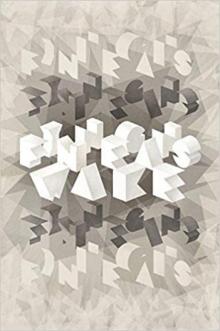 Penguin Classics the Restored Finnegans Wake
Penguin Classics the Restored Finnegans Wake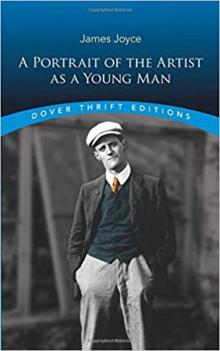 A Portrait of the Artist as a Young Man (Dover Thrift Editions)
A Portrait of the Artist as a Young Man (Dover Thrift Editions)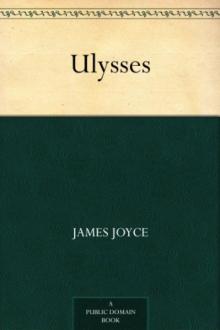 Ulysses
Ulysses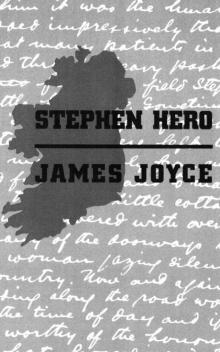 Stephen Hero
Stephen Hero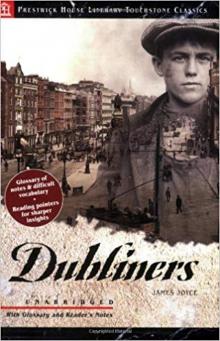 Dubliners
Dubliners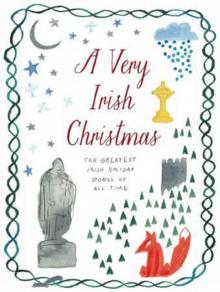 A Very Irish Christmas
A Very Irish Christmas The Complete Works of JAMES JOYCE
The Complete Works of JAMES JOYCE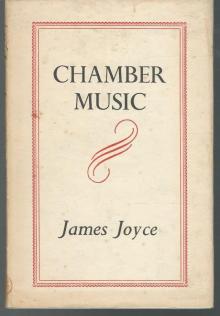 Chamber Music
Chamber Music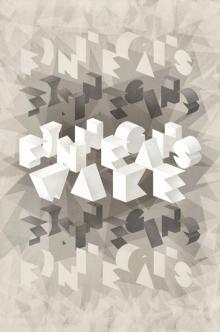 The Restored Finnegans Wake
The Restored Finnegans Wake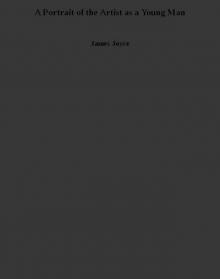 A Portrait of the Artist as a Young Man
A Portrait of the Artist as a Young Man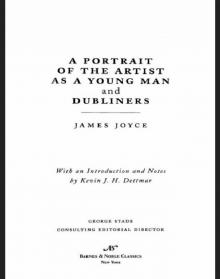 Portrait of the Artist as a Young Man and Dubliners (Barnes & Noble Classics Series)
Portrait of the Artist as a Young Man and Dubliners (Barnes & Noble Classics Series)